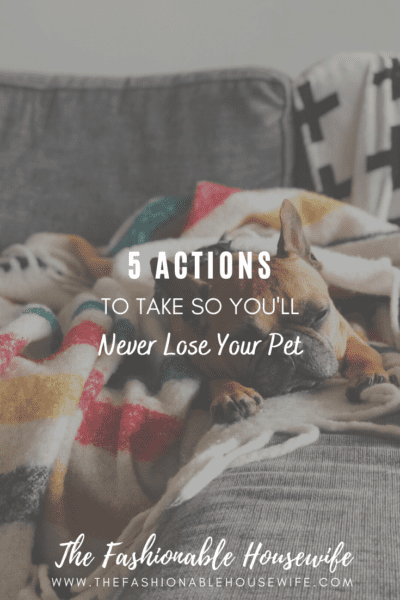
Losing your dog, cat, rabbit, or tortoise is likely one of your biggest fears, as they are an important and much-loved member of your family. Unfortunately, if your pet does go missing and can’t be identified, they could end up in a shelter or the pound.
As you will want to do everything in your power to keep them safe and healthy, here are five useful actions you can take to take to ensure you never lose your pet:
- Microchip Your Pet
Most household pets can be microchipped, such as a dog, cat, rabbit, parrot, tortoise, snake, or ferret. If you do lose your pet, a microchip can help others to identify who they belong to, and they can then contact you. To improve your likelihood of being reunited with a lost pet, you must take them to a respected veterinary clinic for microchipping, such as veterinarianmidlothianva.com.
- An ID Tag
An ID tag is another action you must take to increase the chances of being reunited with your lost cat or dog. The ID tags should feature your contact details, including home address and a contact number. You also could add another tag with their up-to-date vaccination records. When adding an ID tag, make sure their collar isn’t too tight or loose, and buy a comfortable yet durable material. It is recommended that you don’t include your pet’s name, however.
- Choose the Right Leash
Different dogs will require different leashes. For example, if you have a large, active dog, you will likely need to buy a stronger, longer leash, while small canines might only require a short-length leash.
If your dog loves to pull during a daily walk while exercising with your dog, chain or rope leashes are superb options and could help you to take greater control of your pet. Remember to keep your canine on a leash when in public to keep them safe, this is a law in many states.
- Secure Your Yard
A pet could escape from their owner’s yard. To prevent your dog or cat from wandering around the neighborhood, you must secure your outdoor spaces. For example, install a fence that your dog would be unable to jump over, or add a border at the bottom of your fence to prevent your cat or another household pet from escaping. Also, routinely check your fencing for loose panels that they might be able to fit through when exploring your yard.
- Monitor Your Dog During Loud Noises
Many dogs are often afraid of loud, unexpected noises, such as fireworks or thunderstorms. Monitor your pet’s behavior during this time to identify if they need comfort and to stop them escaping from your home. Many canines tend to flee when they are stressed or feel under pressure. Monitor their actions and behavior when loud noises strike and hold them close to ensure they feel calm and safe.
Losing your pet is a common fear for many pet owners. Ensure your pet remains firmly by your side throughout the years by following these helpful tips.



